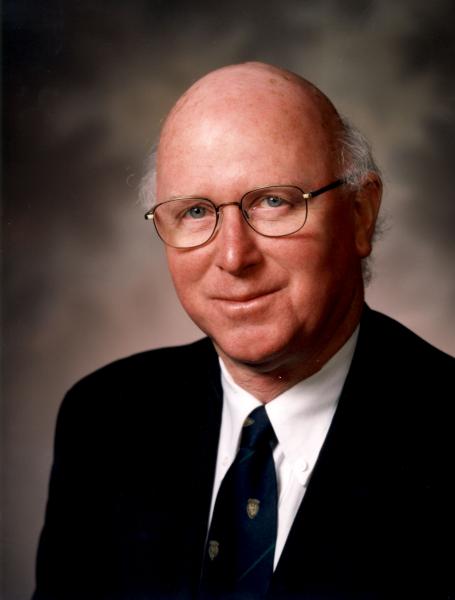In memoriam: Alan Astbury

Physicist drew UVic into international scientific collaborations that helped put department’s achievements on the world stage
This July, UVic lost one of its most illustrious scientists. Alan Astbury, the inaugural R.M. Pearce Chair of Physics, was already an internationally renowned physicist when he joined the faculty in 1983. His prior work at TRIUMF—Canada’s leading particle facility, co-founded by UVic—brought him into the orbit of researchers from Victoria and helped convince him to settle here.
Once on campus, Alan championed a number of initiatives that helped build UVic’s world-class particle physics program. Major international collaborations included analyzing data from the UA1 experiment, which had just discovered the long searched-for W and Z particles.
In the Fall of 1984, Carlo Rubbia was awarded the Nobel prize (along with Simon van der Meer) for the discovery of the W and Z bosons. I was working at CERN, and Carlo’s assistant asked me to call Alan at home (at 2:00 a.m., Victoria time) to ask if he would come to the ceremony in Stockholm. They were afraid to wake Alan up—but as it was good news, I figured I could be the one to rouse him. (Not surprisingly, Alan accepted the invitation.)
That year, Alan was also asked to join a key scientific policy committee at the Stanford linear accelerator—and in 1985, UVic became a member of Stanford’s prototype linear electron collider. The Victoria contribution to the Stanford experiment was half of a large complex calorimeter based on liquefied argon—a growing area of expertise that helped set the stage for participation in even larger physics collaborations.
Alan also opened doors at the Institute of Particle Physics and NSERC that put a running list of UVic scientists at the table for key decision-making at the national level, and he served on the Armstrong Committee—one of the first efforts by NSERC and the NRC to develop a national long-range plan for subatomic physics.
In 1994, Alan was asked to serve as the director of TRIUMF, where he swiftly created a new vision for the lab and launched a new accelerator project to create rare nuclei. Alan personally and TRIUMF as a whole played crucial advisory roles on the early design of the ATLAS experiment, and helped position UVic as one of the strongest Canadian groups in ATLAS. As TRIUMF director, Alan oversaw and facilitated important Canadian contributions to both the Large Hadron Collider and the ATLAS detector.
The scope of Alan’s interest and service to his field was truly breathtaking. While serving as TRIUMF director, he also managed to serve on international review committees and hosted and chaired the International Conference on High Energy Physics in Vancouver.
And though he took on the directorship of TRIUMF in an era of some uncertainty, by the time Alan retired as the facility’s director in 2001, it had cemented an international reputation as a world leader in nuclear astrophysics and nuclear structure physics.
After retiring from TRIUMF, Alan served as the President of the International Union of Pure and Applied Physics (IUPAP) from 2005 to 2008. Cecilia Jarlskog, current President of IUPAP, recently wrote that “Alan was a man with clear ideas and active engagement in introducing and implementing new initiatives in IUPAP. During his presidency he succeeded in recruiting 11 new IUPAP member countries.... Another initiative of Alan’s was the introduction of IUPAP Young Scientist Medal and Prize, which have been awarded by the IUPAP Commissions since 2006. Alan was also committed to making physics itself more inclusive and worked hard to bring women into leadership positions within IUPAP.”
Alan’s long list of accomplishments also drew substantial national and international recognition, including the Rutherford Medal, awarded by the British Institute of Physics. The many awards also include honorary degrees from UVic and SFU, as well as his alma mater, the University of Liverpool. He was an active Fellow of the Royal Society of London.
Canada’s proud role in the recent discovery of the Higgs boson also owes much to Astbury’s remarkable foresight.
Personally, Alan loved traditional jazz and football (or, as we’re forced to call it in North America, soccer). I believe he could have played professionally. We were walking across campus one day when a stray soccer ball rolled passed us. With an almost imperceptible flick of his foot, he shot the ball a remarkable distance directly back to the players who lost it.
In recent years, it was hard to remember that Alan was an emeritus professor. He came to UVic every day. His door was always open and he continued to give wise advice and regale us with amusing anecdotes. He was very interested in the welfare of the students and post-doctoral fellows. We will miss his wisdom, his humour and his humanity.
—Submitted by Richard Keeler

